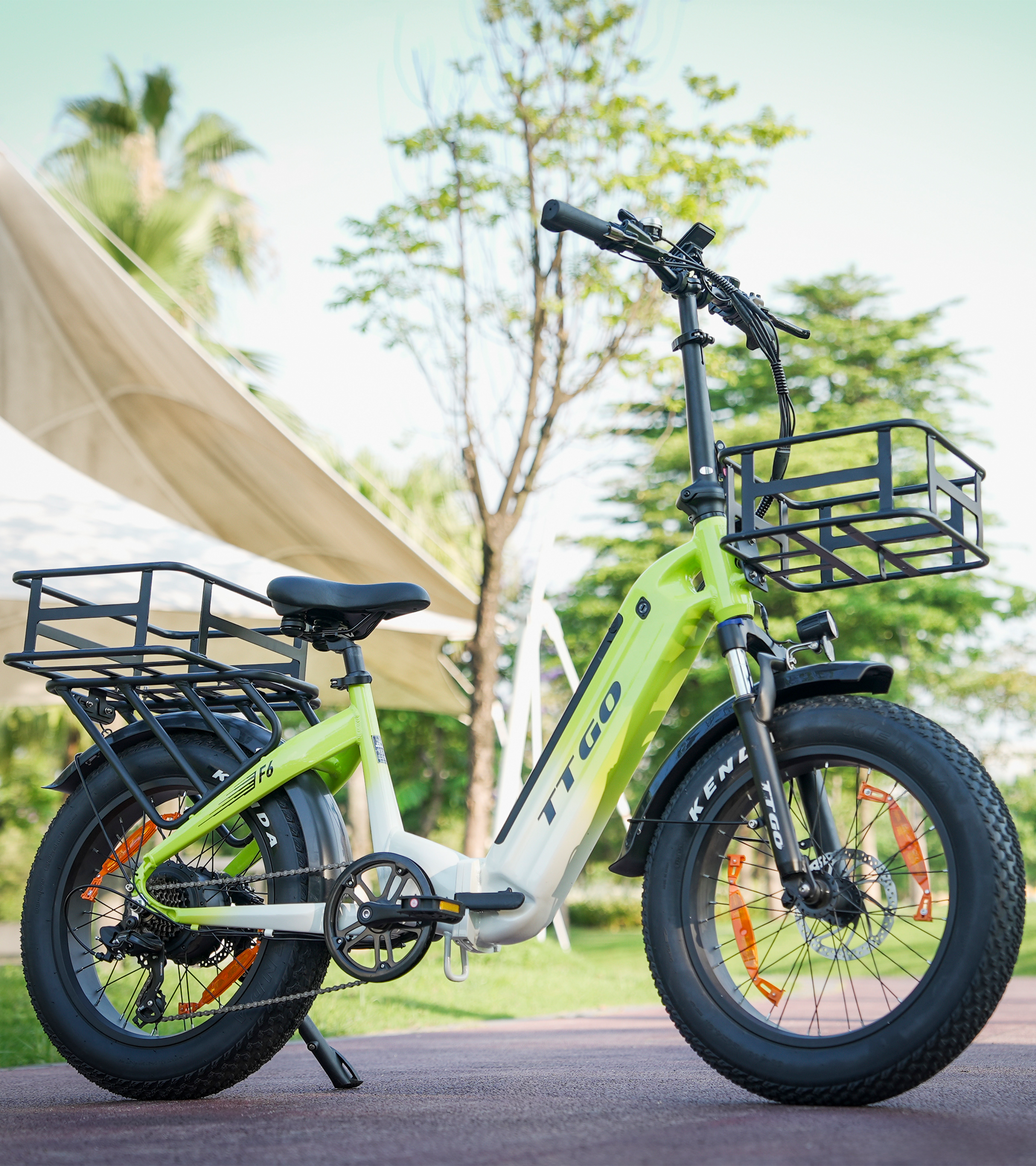Understanding eBike Lithium Batteries
- Battery Type: Most electric bikes today use lithium-ion (Li-ion) batteries, known for their high energy density, light weight, and long cycle life.
- Voltage & Capacity: Typical eBike batteries operate at 36V or 48V, with capacities ranging from 10Ah to 20Ah (i.e., 360Wh to 960Wh). For instance, a city commuter bike may come with a 36V 10Ah (360Wh) battery, while long-distance or high-powered models often use 48V 15Ah (720Wh) batteries.
- Cycle Life: A quality lithium battery usually supports 500–1000 full charge-discharge cycles before its capacity declines to around 80% of its original level. This translates to about 3–5 years of regular use. Since battery degradation is inevitable over time, proper maintenance is crucial to maximizing lifespan and performance.
Correct Charging and Storage Practices
- Avoid Overcharging and Deep Discharging: Do not wait until your battery is fully depleted before recharging. Ideally, recharge when it drops to around 30–60%. Lithium batteries have no memory effect, so you can charge them at any point. Avoid leaving them at 100% for extended periods—this accelerates chemical aging. A good practice is to charge up to 85–90% if you don’t need the full range.
- Charging Environment: Charge your battery in a temperate environment, ideally between 15°C and 25°C. Avoid charging in extreme temperatures (e.g., below 0°C or above 35°C). Never charge a hot battery immediately after a ride—let it cool first. Always use the original charger and unplug the battery once it’s fully charged.
- Storage Charge Level: If you don’t plan to use the battery for an extended period, store it at 40–60% charge. This prevents deep discharge damage and reduces chemical aging. Store in a dry, well-ventilated, cool location (ideally 10°C–20°C). Never leave it in hot (e.g., car trunks) or damp environments.
Winter Battery Care Tips
Cold weather reduces battery efficiency and shortens range. When temperatures drop below 10°C, bring your battery indoors when not in use. If you’re not riding during winter, store the battery at 60–70% charge and keep it disconnected. Recharge it every 3–6 months to avoid deep discharge.
- Avoid Charging When Cold: Never charge a frozen or cold battery—this can damage the internal structure. Instead, let the battery warm up to room temperature naturally before charging. Do not use external heaters or blow dryers.
- Winter Riding Strategy: Reduced range is normal in the cold, so plan shorter routes or carry a spare battery. As long as temperatures stay above -10°C, there’s little risk of permanent damage, but consistent cold can lead to temporary capacity drops. Some riders use insulated covers or carry the battery close to the body for warmth during outdoor rides.
Summer Battery Care Tips
Hot weather can also be harmful to batteries. High temperatures speed up chemical aging, reducing long-term capacity. Keep your battery in cool, shaded areas whenever possible. Avoid exposing it to direct sunlight or storing it in sealed hot spaces (like inside a car).
- No Charging in High Heat: Only charge the battery when it’s cool—ideally early morning or late evening. If the battery is hot after riding, let it cool before charging. Use ventilated, shaded areas for charging and avoid stacking accessories that might trap heat.
- Cooling and Protection: Keep the battery out of tight, insulated containers during summer. Consider wrapping it with reflective or heat-insulating materials to shield it from direct sun. Proper ventilation and temperature control can significantly extend battery lifespan.
Daily Maintenance Tips & Common Mistakes
- Regular Cleaning: Keep the battery and terminals dry and clean. After riding in rain or mud, wipe down the battery and connectors. Never use high-pressure water to clean your eBike—it may damage the battery or electronics.
- Charging Habits: Lithium batteries don’t require full discharge before recharging. Frequent partial charging (e.g., 20% per day) is better than full cycles. Five 20% charges equal one full cycle—this is easier on the battery than one deep cycle.
- Storage Myths: Avoid storing the battery fully charged for weeks. Instead, keep it around 50% for long storage.
- Safety Tips: Always use manufacturer-approved chargers. Don’t modify the battery pack or attempt DIY repairs—this may damage the battery management system (BMS) and void your warranty. If you notice swelling, overheating, or abnormal charging behavior, stop using the battery and contact professional support immediately.
Climate-Specific Advice for Different Regions in Europe
- Northern Europe (e.g., Scandinavia): Winters are long and cold. Batteries must be kept indoors and warm. Riders often charge and store batteries indoors after every trip.
- Central Europe (e.g., Germany, Poland): Four distinct seasons. Summer and winter both require specific precautions—cool charging in summer and indoor storage in winter. Spring and autumn are ideal for riding, but rainy days may require extra care in drying and cleaning.
- Southern Europe (e.g., Spain, Italy, Greece): Hot and dry summers make heat management a priority. Always park in shade, avoid direct sun charging, and keep batteries cool. Winters are mild, so winter protection is less critical, but humidity can still be a factor.
Conclusion: Whether you ride year-round or seasonally, proper battery care is the key to maximizing range and lifespan. Avoid temperature extremes, charge wisely, and store with care. A little attention goes a long way toward making your eBike experience more efficient and enjoyable.


Share:
🛠️ The Ultimate Daily eBike Maintenance & Inspection Guide (EU Edition)
Electric Bicycle Buying Guide in Europe: €500–€2000 Budget